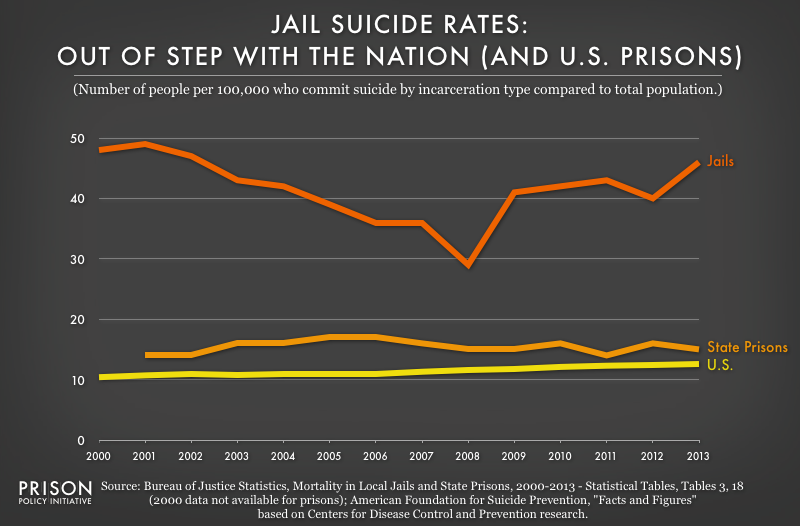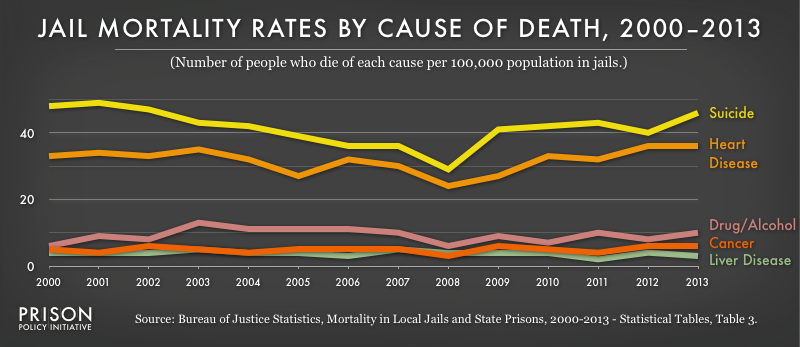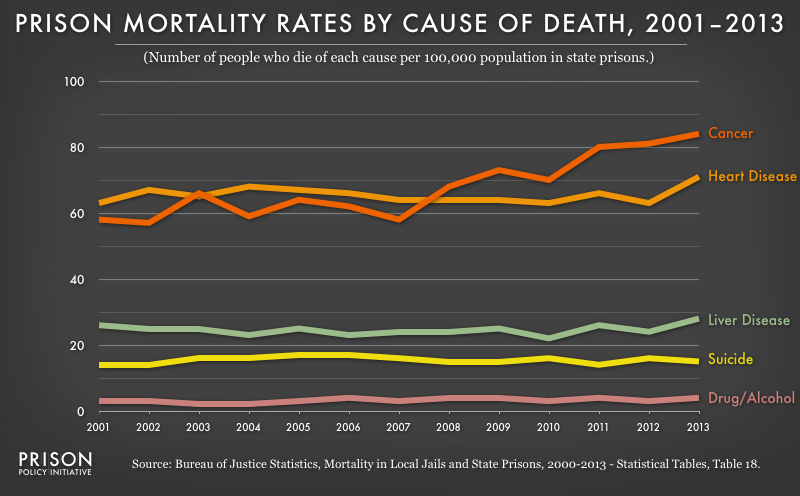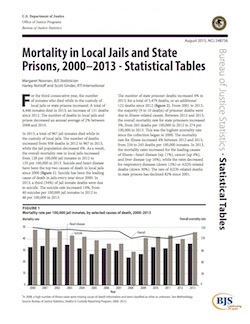New BJS report shows suicide in jails is a national crisis
New BJS report shows that suicide in jails has been leading cause of death from 2000-2013.
by Bernadette Rabuy, August 4, 2015
At this unique moment when the public is actually paying attention to local jails, the Bureau of Justice Statistics (BJS) has released a new report based on its Death in Custody Reporting Program showing that the number of people who died while under custody of state prisons and local jails increased for a third consecutive year and, especially troubling, that suicide in jails is a national crisis:

Every year since 2000, suicide has consistently been the leading cause of death in local jails. Overall in the last year, deaths by natural causes declined while unnatural — and presumably preventable — deaths increased. In 2013, over a third of all deaths in jails were suicides:

At the same time as the nation is paying attention to the story of Sandra Bland whose death in a Texas jail may or may not have been a suicide, the BJS data shows that sadly, suicide after the first few days of incarceration is common. Forty percent of people who commit suicide in jail do so within 7 days of admission.
The report underscores that while typically off the public’s radar, local jails should never be ignored. Beyond the fact that almost 12 million people cycle through jails each year, jails house many people who are legally innocent but are too poor to afford bail and those in great need of mental health services. In fact, Cook County, Illinois recently made headlines for doing the unusual: appointing a psychologist to run the county jail, which is actually one of the nation’s largest de facto mental health institutions.
The data also raises the question of whether jails are doing enough to provide adequate medical and mental health care at those high-risk moments when it is needed most. Some states know this is a problem. As Brandon Wood, director of the Texas Commission on Jail Standards, a state agency that has begun to track suicides in Texas jails, told the Houston Chronicle in its in-depth analysis of Texas jail suicides, “After reviewing deaths in custody over the last few years, we keep identifying lapses in observation and proper screening.”
The same BJS report also discusses the very different causes of death in state prisons. In 2013, more than half of deaths in prison were of incarcerated people age 55 or older. Suicide is much rarer, and illnesses are the major cause of death for the aging prison population:

While jails obviously need to address the alarming rate of suicides, the best solution to mortality in state prisons is sensible sentencing and parole reform.
The report can be found at http://www.bjs.gov/content/pub/pdf/mljsp0013st.pdf





[…] From the Prison Policy Initiative: […]
[…] municipalities are adopting reforms that call jails by other, gentler names without addressing the systemic issues that make jails a particularly tough place for those struggling with mental health and substance […]